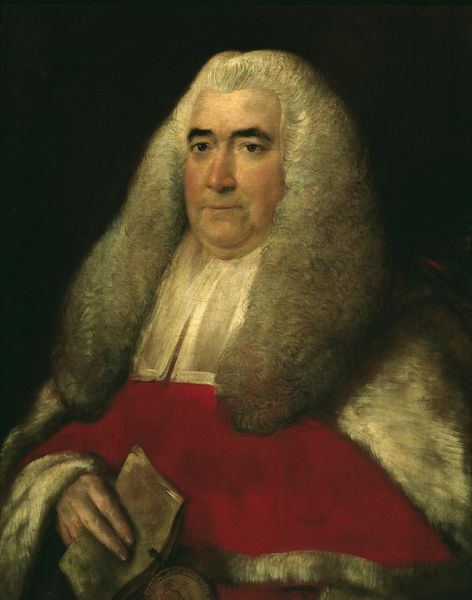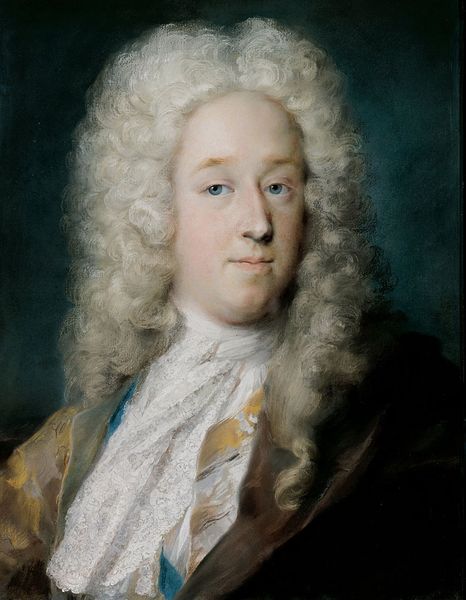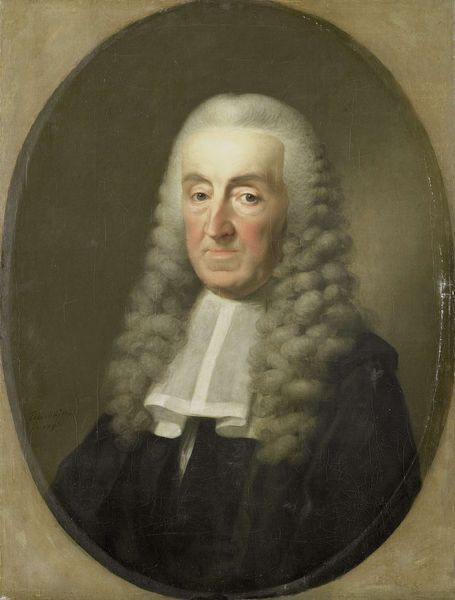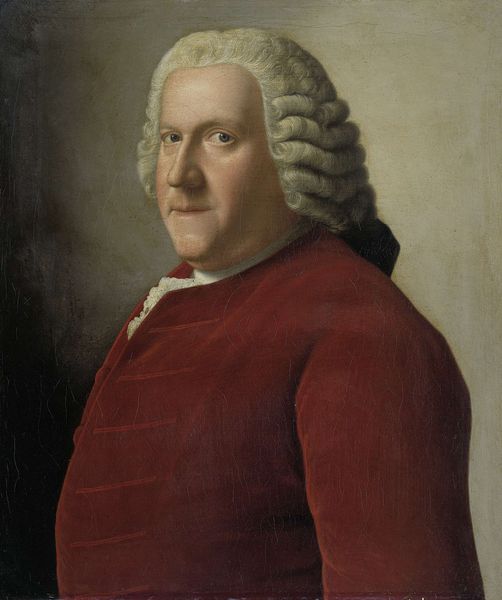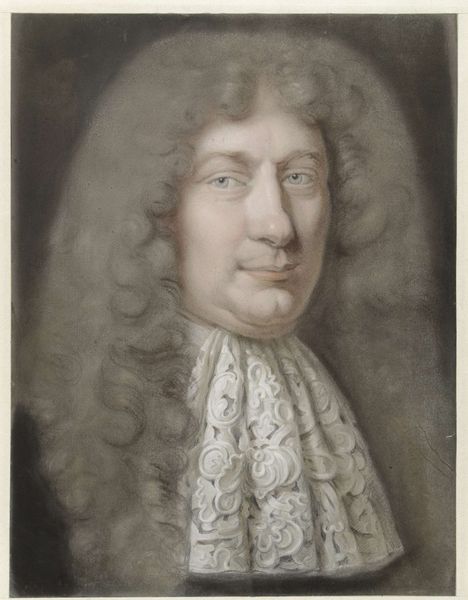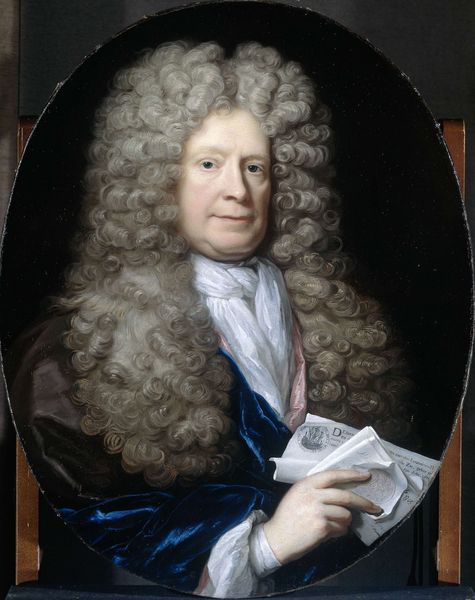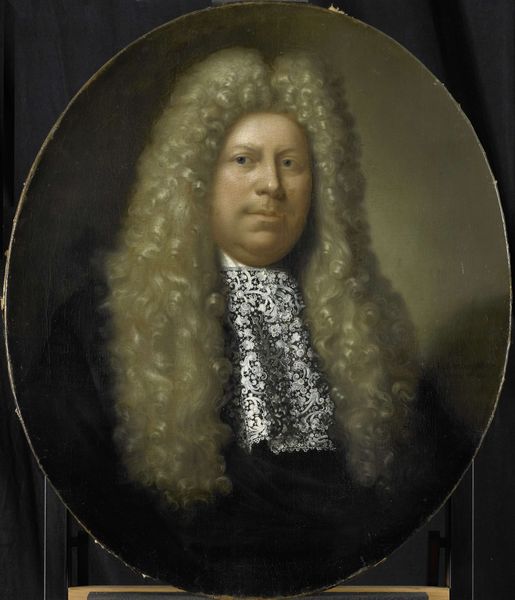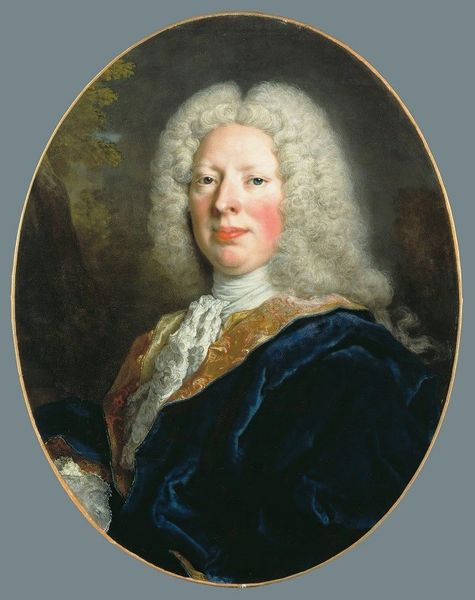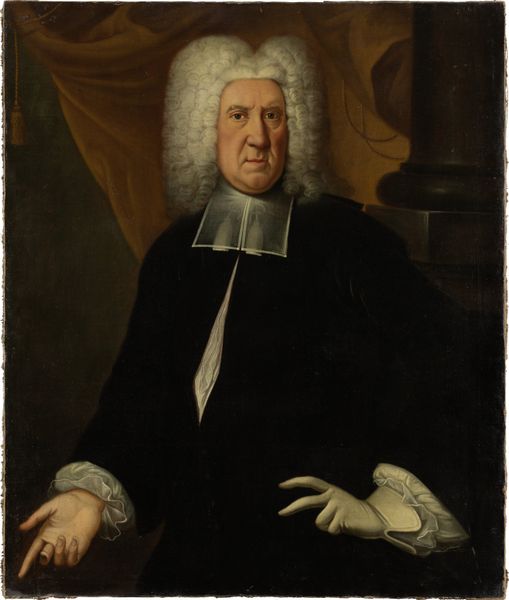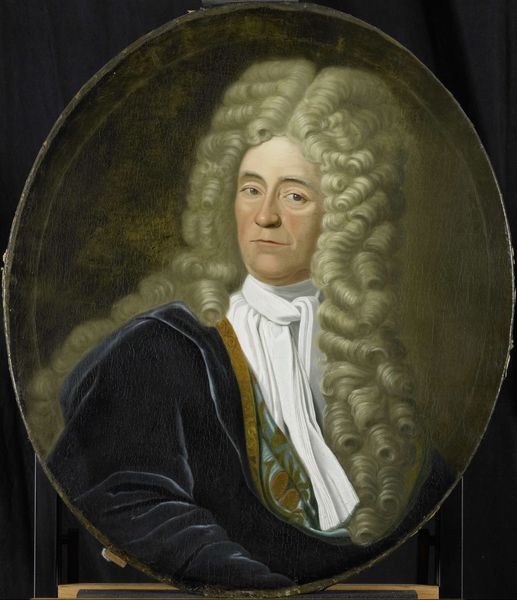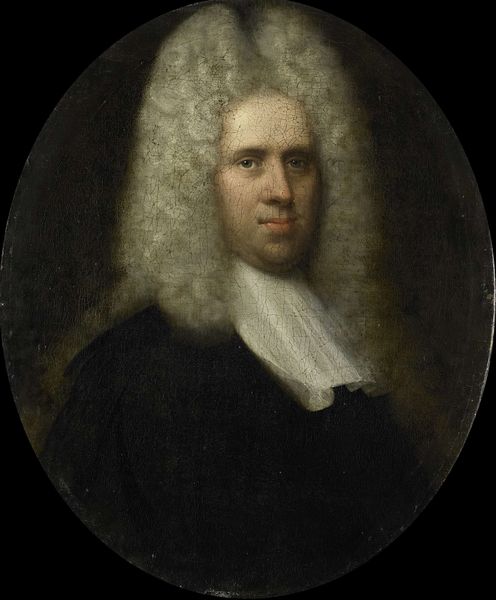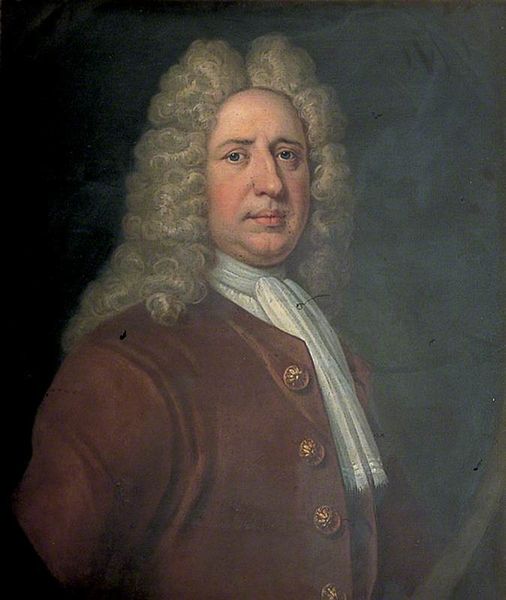
painting, oil-paint
#
portrait
#
figurative
#
baroque
#
painting
#
oil-paint
#
male portrait
#
history-painting
#
academic-art
#
portrait art
Copyright: Public Domain: Artvee
Curator: Immediately, I see authority. A certain stoic gravitas radiating from this gentleman. Editor: Yes, a man practically swallowed by that incredible wig! This portrait, known as 'Lord Lifford,' is attributed to Joshua Reynolds. Painted with oil on canvas, the image gives us a peek into the life and times of the British peerage. Curator: The wig itself is fascinating. Beyond just a fashion statement, wigs like these were potent signifiers of status, wisdom, and adherence to societal norms. This specific style echoes the gravitas expected of someone in a position of power. It practically screams "Establishment!" Editor: Absolutely. Reynolds was masterful at imbuing his portraits with a sense of the sitter's importance, which suited his clientele in the British elite. What I find so interesting here is how Reynolds balances the imposing wig with a very human face. The softness of the skin tones and the hint of vulnerability in the eyes creates an intriguing contrast. Curator: The color palette seems deliberately muted, almost monochrome, further emphasizing the power of the wig and the figure's position. It’s interesting to reflect upon how cultural notions of power are so readily accepted in portraits like these. Editor: Power isn’t naturally immutable but always depends on the gaze of its beholders, just like visual art. It shows how symbols—like clothing, style, objects—became potent in communicating social and political ideas, which continues in contemporary portraiture today. Curator: Agreed. It's remarkable how a single image can carry such a wealth of cultural memory. This portrait reflects continuity while also echoing our evolving interpretation of power. Editor: Considering all of this makes it worthwhile to re-evaluate the meaning that artworks and public figures had versus have today. Curator: I find myself questioning now what it truly meant to portray a public figure, given that we still seek the power of public approval through our cultural creations. Editor: It makes us realize how portraits serve not only as representations of people, but also a looking glass for ourselves, right?
Comments
No comments
Be the first to comment and join the conversation on the ultimate creative platform.
